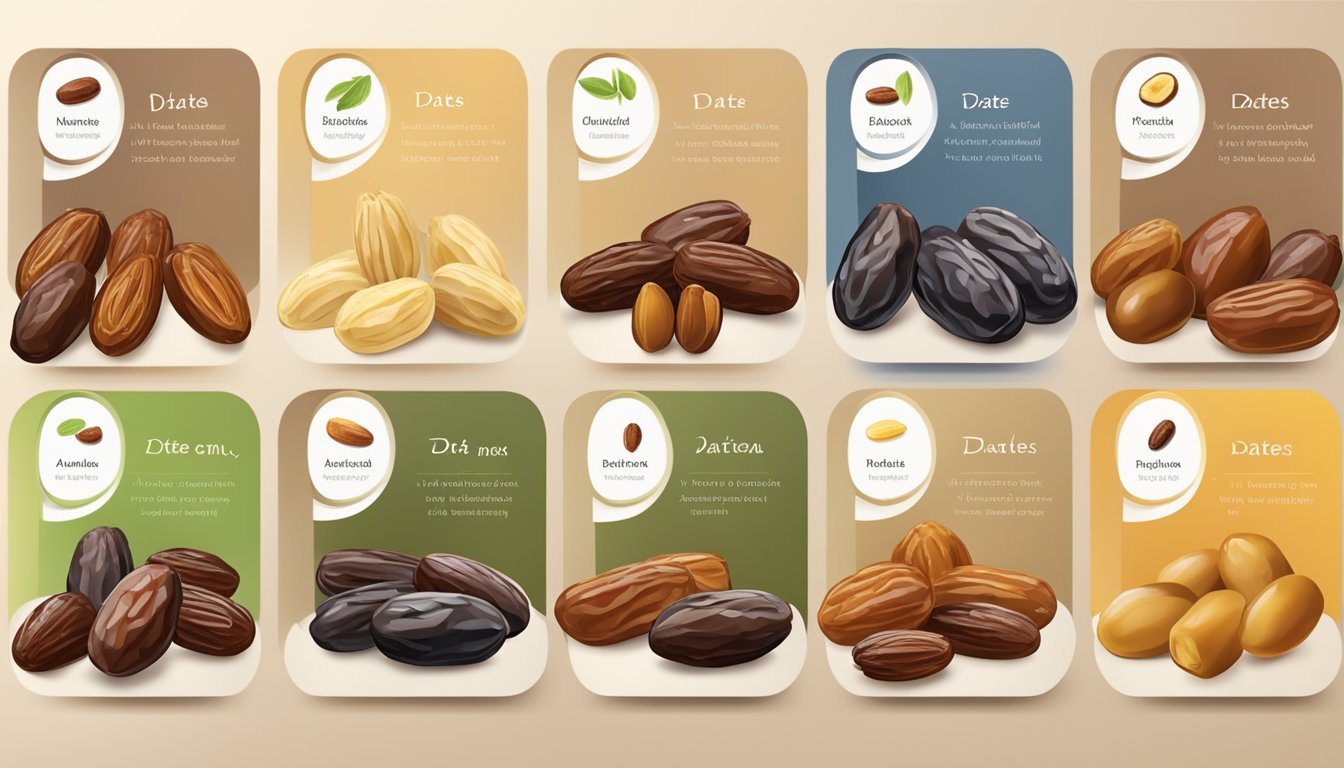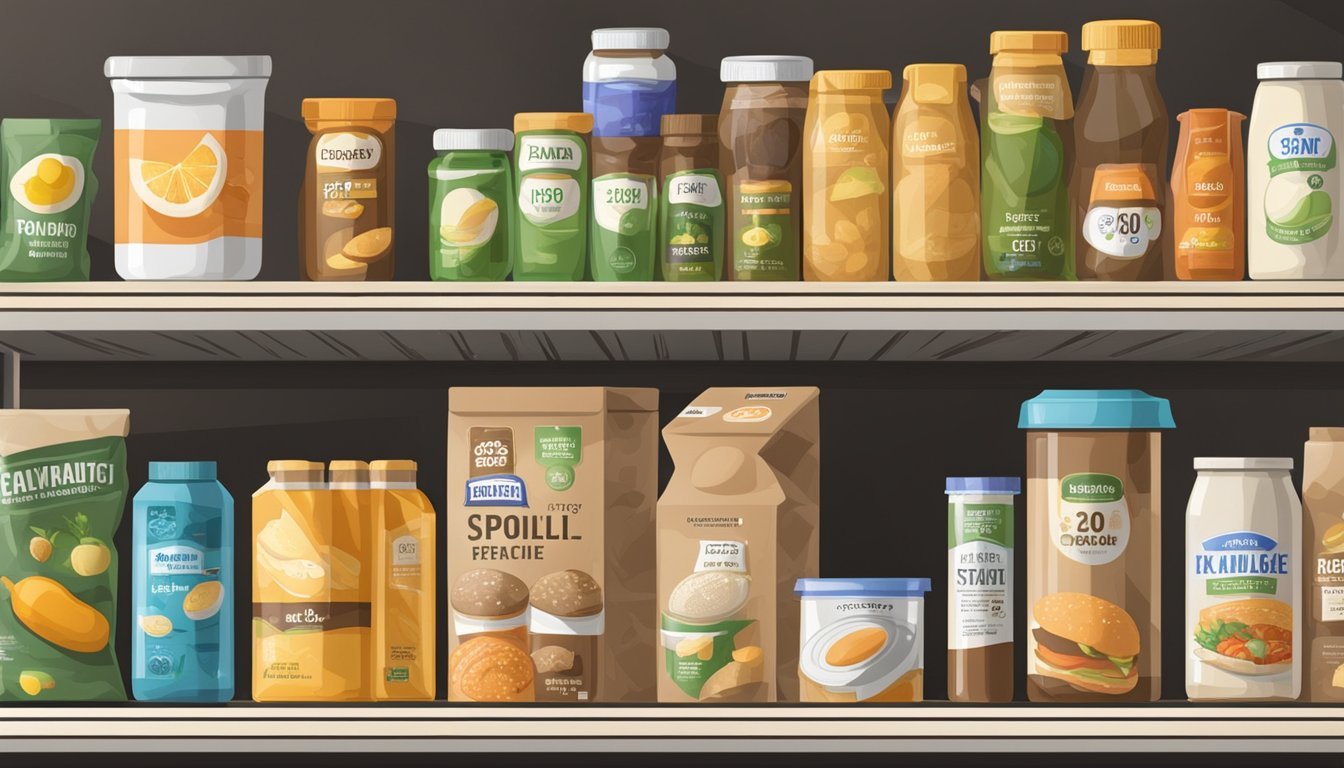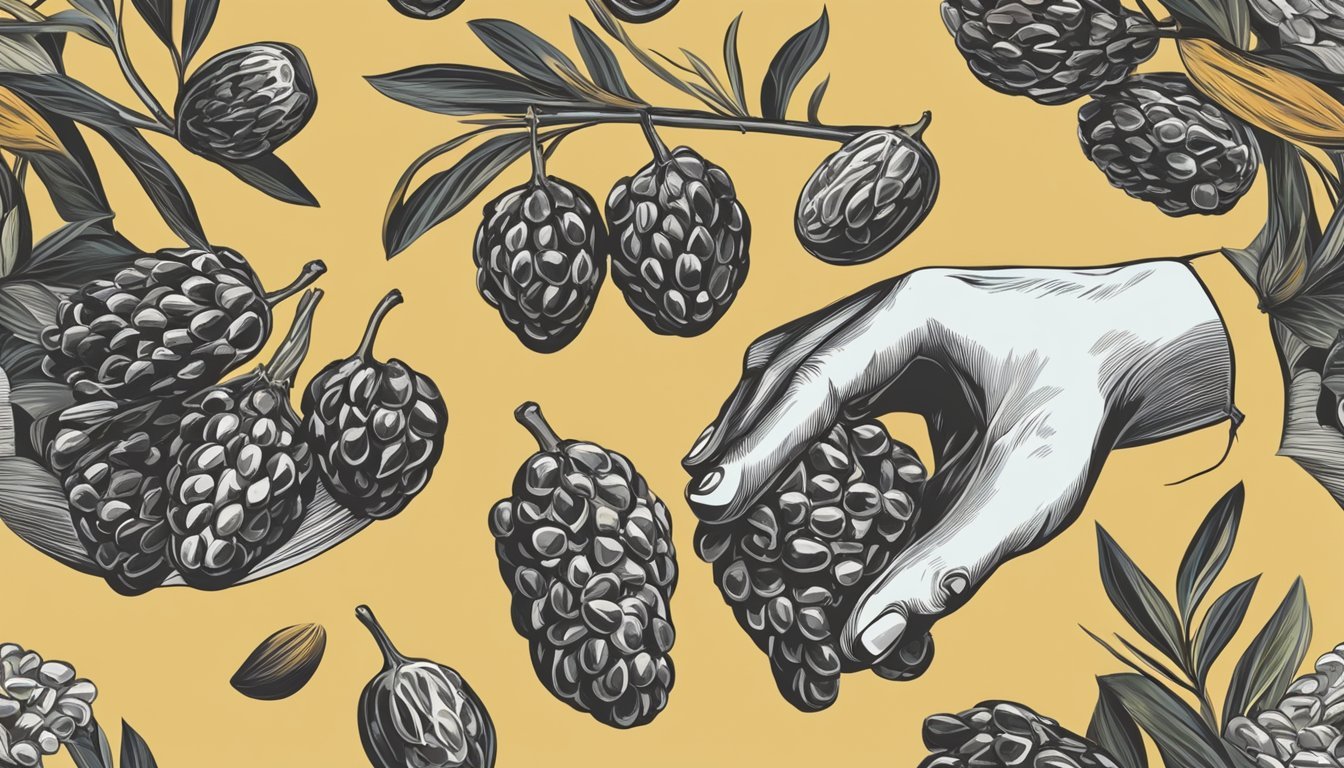How Long Do Dates Last?
Uncovering Shelf Life and Storage Tips
Dates, with their natural sweetness and nutritional value, are a popular snack and ingredient for many dishes. Understanding the shelf life of dates is essential to ensure their flavor and freshness remain intact. Typically, at room temperature, dates can last up to two months. If stored in the refrigerator, their shelf life extends up to six months due to the cooler temperatures which slow down the degradation process. For long-term storage, dates can be frozen, lasting up to a year without a significant loss in quality.
Storage plays a significant role in the longevity of dates. It is recommended to store dates in an airtight container or a resealable plastic bag to protect them from air exposure and humidity. This prevents them from drying out or absorbing excess moisture, which could lead to spoilage. Glass or plastic containers are suitable for this purpose, and ensuring that the container is properly sealed maintains the dates' ideal condition.
Monitoring the condition of stored dates is important. Over time, dates may lose moisture and sugar may crystallize on the surface, giving a white appearance which is often mistaken for mold. However, if the dates display discoloration or mold, they should be discarded. When caring correctly for their storage, one can enjoy the sweet taste and health benefits of dates for an extended period.
Nutritional Profile and Varieties of Dates
Dates offer a significant nutritional value and come in various varieties, each with its distinct texture and sweetness. They are high in fiber and contain essential vitamins and minerals that contribute to their health benefits.
Types of Dates
There are numerous types of dates, but some of the most popular include:
Medjool: Often referred to as the "King of Dates," Medjool dates are large, soft, and naturally sweet with a caramel-like flavor.
Khadrawy: A soft and dark date, Khadrawy is also rich in flavor and has a tender texture.
Halawy: These dates are incredibly sweet and small to medium in size, with a chewy texture.
Barhi: Known for their round shape, Barhi dates can be eaten soft or semi-dry, offering a unique flavor that is often likened to coconut.
Semi-Dry Dates: Varieties like the Dayri are less sweet and have a firmer chew, making them excellent for snacking.
Health Benefits
The health benefits of dates are numerous due to their rich nutrient profile:
Fiber: An excellent source of fiber, consuming dates can support digestive health.
Nutrient-Rich: Dates contain a variety of vitamins and minerals, such as potassium and magnesium, as well as a considerable amount of iron and Vitamin B6.
Antioxidants: With their high levels of antioxidants, dates may contribute to improved health by reducing oxidative stress.
Dates are indeed a power-packed fruit that comes in many delicious varieties and provides multiple health benefits through their naturally sweet, fibrous composition.
Optimal Storage Conditions
Proper storage is key to preserving the quality and extending the shelf life of dates. They can be kept at room temperature, refrigerated, or frozen, depending on how long they need to be stored.
Room Temperature
Dates should be stored in a cool, dry place in a pantry or kitchen cupboard. It is advisable to keep them in a sealed container or airtight container to protect them from moisture and pests. Under these conditions, dates can last for:
Soft dates: Up to a month
Semi-dry dates: Up to three months
Dry dates: Up to six months
Refrigeration
For longer storage, dates can be placed in the fridge in a sealed container or a freezer bag to preserve freshness. This method is especially beneficial if they are going to be consumed over several weeks or months. In the refrigerator, dates can stay fresh for:
Up to 1 year: Monitoring for any signs of spoilage is important.
Freezing Dates
For the longest preservation, freezing dates is highly effective. Dates should first be pitted and placed on a baking sheet not touching each other. Once frozen, they can be transferred to a freezer bag or airtight container, with headspace to allow for expansion. Stored in the freezer, dates can last:
Up to 2 years: They should remain flavorful and retain a pleasant texture when thawed.
Shelf Life and Spoilage Indicators
When determining the shelf life of dates and identifying spoilage, a few specific factors and indicators are crucial for consumers to be aware of. Understanding these can ensure the consumption of dates while they are at their best quality and safe to eat.
Shelf Life Determinants
The shelf life of dates is influenced by various factors including storage conditions and whether the dates are fresh or dried. Typically, fresh dates can last up to 2 weeks when stored in the pantry, and they can last up to 6 months when refrigerated. Dried dates have a longer shelf life, usually lasting up to a year in the pantry and up to 5 years when refrigerated.
Signs of Spoilage
Dates are prone to spoilage just like any other fruit. Spoilage can be identified by certain tell-tale signs:
Smell: A sour or fermented smell is usually the first sign of bad dates.
Texture: Any slimy texture or noticeable mold growth indicates that the dates have gone bad.
Discoloration: Look for an unnatural change in color, which may suggest spoilage.
Sugar Crystallization: While not a sign of spoilage, dates may develop white spots due to crystallized sugar. This is normal and doesn't suggest they are spoiled.
Insects: Presence of insects, worms, or spider webs in the packaging indicates infestation and spoilage.
It's important for consumers to check these indicators before consuming dates to avoid food-borne illnesses.
Safe Consumption and Preventive Measures
When it comes to dates, understanding their shelf life and adopting preventive measures for storage are crucial for safe consumption. This ensures that they retain their sweet flavor and prevents spoilage.
Preventing Spoilage
Fresh Dates: Fresh dates should be stored in a cool, dry place away from direct sunlight. For extended shelf life, they can be kept in the refrigerator for several weeks.
Dried Dates: Dried dates last longer due to their low moisture content. They should be kept in an airtight or sealed container to prevent them from absorbing moisture, which could lead to mold growth. Here's how to properly store them:
Refrigeration (Optimal for Longevity):
Store in the vegetable drawer for a consistent temperature.
Keep in an airtight container to minimize exposure to air.
At Room Temperature (Short-Term Storage):
Keep in a cool, dark, and dry place.
Ensure they are in a sealed container to protect from pests.
How to Tell If Dates Are Bad
Visual Check: Spoiled dates often have a noticeable change in color or appearance. Mold is a clear indicator that dates are no longer safe to consume.
Smell and Flavor Check:
Normal: A sweet, caramel-like scent is typical of good dates.
Spoilage: Any off or sour smell indicates they might be going bad.
Texture Check: Dried dates should be firm but not hard; any excessive hardness or crystallization of sugars on the outside suggest they are past their prime.
Taste Test:
If there's any doubt after visual and smell checks, a small taste can be telling.
Dates that have lost their characteristic sweetness and have an unpleasant flavor should be discarded.
Consumer should routinely check their dates for these signs to ensure they are enjoying high-quality, flavorful, and safe dates.
Culinary Uses and Preservation Techniques
Dates are versatile in culinary applications and can be preserved through various techniques to extend their longevity. They offer a natural sweetness to dishes and can be maintained in a quality state with the proper methods.
Utilizing Dates in Recipes
In the kitchen, dates serve as a natural sweetener and are frequently incorporated into desserts. Their sweet flavor enhances cakes, cookies, and even savory dishes. They can be handled in several forms:
Whole: Good for stuffing or as edible garnishes.
Chopped: Ideal for blending into batters or doughs.
Puréed: Often used to sweeten recipes as a sugar alternative or in smoothies.
Dates also add a tangy note that complements the sweetness, making them suitable for various culinary creations, adding a depth of flavor that is both rich and satisfying.
Extending Shelf Life Through Preservation
Preserving dates ensures they are available for use year-round, and their shelf life can be significantly extended with proper storage:
Room Temperature: Dates can be kept in a cool, dry place away from direct sunlight for up to a month when stored in airtight containers.
Refrigeration: Storing in the fridge in a ziplock bag or airtight container can keep them fresh for 6 to 12 months. This method helps prevent dried fruit (how long does dried fruit last?) from hardening and losing their palatable texture.
Freezing:
Method Instructions Duration Freezer Place pitted dates on a baking sheet to freeze individually, then transfer to an airtight container or bag. 1 to 3 years
Freezing offers the longest preservation, but care must be taken to reduce exposure to air which can cause freezer burn. Freezing dates allows them to maintain their flavor and texture for an extended period when properly sealed.
Handling and Inspecting Dates
When handling and inspecting dates, one should pay close attention to texture and appearance, as these are indicators of quality and freshness. Observing visual and tactile signs will help determine if the dates are in good condition for consumption or need to be discarded.
Quality Assessment
One should begin by examining the appearance of dates. A fresh date typically displays a glossy, smooth exterior. For semi-dry varieties, like Deglet Noor, a slight firmness with minimal wrinkles is normal. On the other hand, softer varieties such as Medjool will have a more pliable texture and deeper wrinkles, signifying freshness.
It's normal for dates to have a thin, white film on the surface, which often indicates the crystallization of natural sugars and is not a sign of spoilage. One should, however, be cautious of any discoloration on the dates, as this could suggest deterioration.
Common Defects
The texture of a date is a critical aspect to consider. A high-quality date should be neither too hard nor too slimy; these textures may suggest they are either underripe or have undergone spoilage respectively.
Semi-dry dates should feel firm but not desiccated.
Softer varieties should be chewy and moist without any trace of mushiness.
If one detects sugar crystals on the dates, they should not be alarmed as this is commonplace and does not indicate spoilage. Sugar crystallization is a natural process and can be gently brushed off before consumption. Detecting an off-putting smell or a sour taste, however, is a definitive indicator that the dates are no longer suitable to eat.






